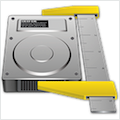

Not everyone reads at the same level or understands content in the same way. To make your content readable, consider your audience's reading level and literacy needs. Readable content means better task completion and higher client satisfaction. Readability is the ease with which a person can read and understand a text.
#Whatsize alternative how to
Avoid references to gender whenever possible.įor more guidance, including how to write inclusively in French, see the Translation Bureau’s Gender-inclusive writing: correspondence. Make gender-inclusive writing your standard practice. Remember to also refer to the Web Content Accessibility Guidelines (WCAG) 2.0.

To make your content accessible, consider how assistive technologies work and how some writing practices may impact people's ability to read or understand text. Making content accessible means a wide range of people can use it, including people with physical and cognitive disabilities (for example, reading disorders, attention deficit disorders, memory disorders). Make sure that the content is accessible, clear and adapted to the widest audience. When planning web content, consider people's needs.
#Whatsize alternative download
transactional (submit a form or download a report).Most people come to a government website to complete a task and expect us to provide information that will help them.

The rules in this guide reflect how people read and use web content. 1.3 Provide equivalent content in both official languages.Guidance on Publishing in the Government of Canada.Standard on Optimizing Websites and Applications for Mobile Devices.Directive on the Management of Communications.Policy on Communications and Federal Identity.requirements set out in the related legislated and policy instruments, including:.templates, content components, character limits and other requirements as described in the Canada.ca Content and Information Architecture Specification.

Related policies, standards and procedures Following this guide's rules and techniques will make it easier for everyone to find, understand and use the government's digital content. However, all institutions are encouraged to use it for both their internal and external web products. Institutions that fall outside of Schedules I, I.1, and II of the Financial Administration Act do not have to follow this style guide. These organizations must follow this style guide's requirements for all public-facing websites and digital services, regardless of the technology, domain name or publishing platform used. The requirements apply to departments and other organizations of the federal public administration listed in Schedules I, I.1 and II of the Financial Administration Act. This style guide is referenced in the Directive on the Management of Communications.
#Whatsize alternative update
If there are conflicts between this guide and The Canadian Style or any other resource, this guide takes priority for content published online.Īs web and language trends evolve, we'll update this guide to meet the changing needs of our audiences. The techniques described in this guide complement the rules set out in The Canadian Style. The purpose of these rules is to make web content easy to find, easy to understand and easy to use for everyone, including people who have physical or cognitive disabilities. The rules are different from practices adapted to print to support principles related to accessibility, readability and usability. This guide establishes the rules you must use to develop and edit English web content that will be published on a Government of Canada website.


 0 kommentar(er)
0 kommentar(er)
